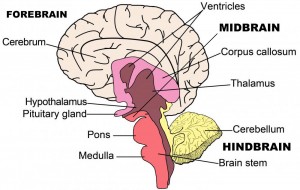WHAT IS NEUROFEEDBACK - Part 1
Part 1 - the brain

Previously I posted research that had found the benefits of Neurofeedback with amygdala regulation. I understand this is a lot of scientific words, so I thought I would explain in an article what it means, because you never know, it may be information you need at some point.
Please note, I am trying to explain only what is necessary to understand, I’m not giving a course 😊. This is a lot of information, so I have broken it down into a series, starting with neuro and the brain, then Behavioural Conditioning, biofeedback and finally neurofeedback. By the end you will understand the concept, please feel free to ask questions you may have.
Starting with Neuro:-
Neuro comes from the word neuron. Inside your head, your brain is made up of a collection of pathways called neurons. These pathways are nerve pathways, that send electrical currents through the neurons, to various parts of the body, for example, if you put your hand on the hot stove, a neuron will send a signal to your hand to reflex and move it.
However, neurons don’t only deal with signals to the body, they are also involved with neuron pathways in the brain. These neurons could be for example memory, such as recalling and filing information, it could be reading a book, or driving to and from work.
Electrical impulses drive neural signals along the pathways. These neuron (electrical) impulses are brainwaves, visually represented similar to the squiggly lines you see on heartbeat monitors.
The parts of the brain are
The Hindbrain
The Hindbrain deals with coordination, muscles, balance and automatic functions such as breathing and temperature. It is often referred to as the reptilian brain, because it is part of, automatic or non-thinking functions of the brain.
The Midbrain
The Midbrain can be seen as the conductor, such as a musical conductor, in this case conducting signals around the body, and deals with movement, attention, consciousness, and also part of vision and hearing.
The Forebrain
The Forebrain, this is the intellectual or modern part of the brain and is involved with intelligence, memory, speech, emotion and personality. The forebrain consists of the following parts:
♢ the cerebrum that has a left and right side, that work together for example the right side will see a word, and the left side will translate the word into logic, a word with a meaning.
♢ The limbic system where motivation, emotions, learning, memory are held, for example if a memory is stored, there are senses (smell, sight, etc) and emotion stored with the memory. If you smell a Sunday roast (sense) you may smile with happiness (emotion) of sitting together at the dining room table laughing with the family (memory) during Sunday roast. Or perhaps you see sherry (sense) in a trifle and it sends a reflux disgust feeling (emotion) of when you were 16 years and drank a whole bottle (memory). This is why people who have experienced trauma may have triggers associated with memory of the senses -: sight, sound, smell, hearing, taste = from the heightened awareness that absorbs everything around them, in a state of survival.
The amygdala is found within the limbic system and holds the fear response, but remember the fear response is learnt and a memory.
Next we will look at behavioural conditioning.
Go Back